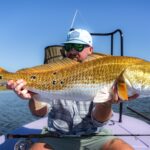
Louisiana Bull Reds Up for Harvest Again: H.B. 604 Must Not Pass
Photo Credit: Carter Abramson | Trevor Johnson Every now and then, we encounter something so
The American Saltwater Guides Association was formed because there was a lack of a unifying voice for fisheries conservation that prioritized resource-first management. Our model follows three core principles to drive change: Science, Education and Advocacy. Sound science is the foundation of everything we do. High-quality data is imperative to making policy decisions that prioritize abundant, sustainable fisheries. When the fisheries management process stalls due to a lack of science to inform action, ASGA works to amplify researchers leading the charge and joins the frontlines to drive innovative research.
To effectively manage a fish population, you must understand its behavior and boundaries. Fish tagging is a powerful tool that empowers scientists to understand fish behavior, populations, and migration patterns, which informs management decisions. Tagged fish have the potential to answer critical questions such as: Where do they go? How long do they live? What habitats do they use? How quickly do they grow? How often are they caught?
There are several types of fish tags, each suited to different research needs. The following blog provides an overview of a few popular methods, empowering fisheries advocates to participate more effectively in research conversations:
Spaghetti Tags (Floy tags)
Spaghetti tags are a straightforward and cost-effective way to tag fish, helping scientists track individual fish over time. These tags are small, wire-like structures injected into the fish, typically near the dorsal fin, to be visible if recaptured in the future. Also known as spaghetti tags, they are usually made of plastic with a unique code or color to identify individual fish and specific tagging programs.
These tags help researchers gather data on fish movement, growth rates, and population trends by providing a simple method of identification without requiring complex technology.
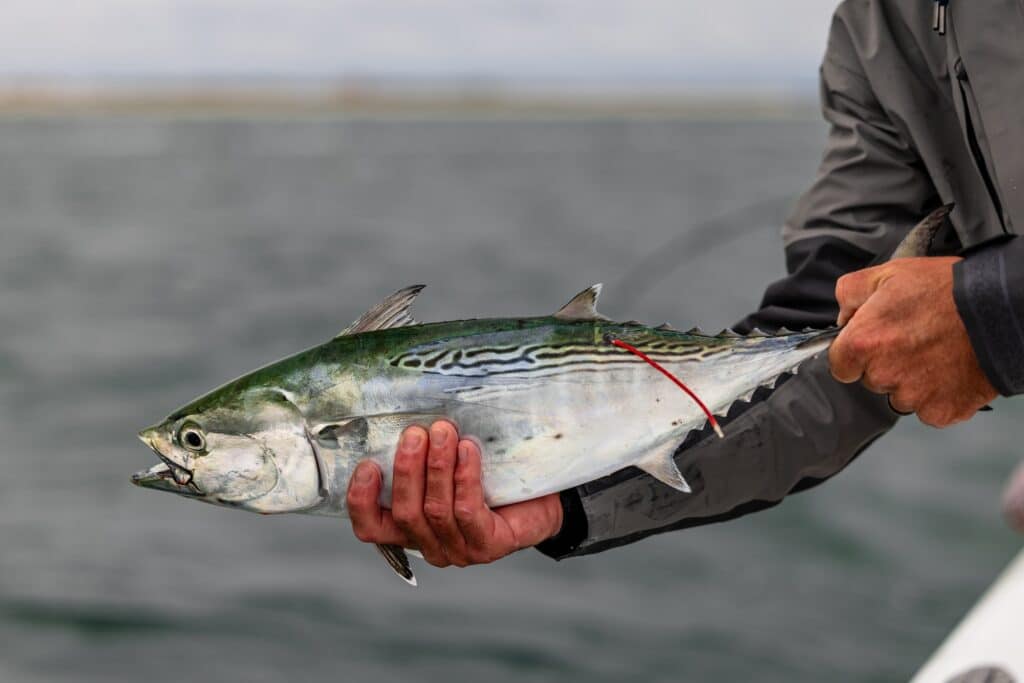
The advantages of spaghetti tags include their simplicity and low cost, making them accessible for large-scale tagging projects. However, they do have limitations, such as relying on recapture for data collection and possible tag loss over time. In simple terms, spaghetti tags don’t teach you anything unless they’re recaptured, at which point you can get information relative to two points in time—deployment and recapture. Even so, we are left with many questions about what happened between those two points.
Despite these limitations, spaghetti tags have been instrumental in fisheries research, allowing scientists and conservationists to make valuable inferences about fish health, migration, and habitat.
Acoustic Tags
Acoustic tagging is a sophisticated method used in fisheries science to study fish behavior, movement and patterns. This technique employs acoustic transmitters and receivers to monitor the movements of tagged individuals over time. Acoustic tags vary in size, signal strength and battery duration, with larger tags generally used for bigger fish. Fish are captured and fitted with tags, which can be internal or external. These tags emit sound pulses (acoustic signals) at specific intervals. The tags are lightweight and designed to minimize any impact on the fish’s mobility or natural behavior.
Researchers deploy arrays of underwater acoustic receivers (acting as listening devices) in specific habitats or migration corridors. These receivers detect the signals emitted by the tagged fish as they swim within the range of the receivers. Each time a tagged fish swims within range of a receiver, the device records the date, time, and identity of the tag. Receiver arrays are typically owned by the organizations that deploy them, but there are cases where arrays are co-owned or jointly funded by multiple organizations, especially for large-scale monitoring projects. These organizations often control data retrieval and decide how frequently to download and analyze data based on project goals, funding, and logistical constraints.

Data sharing requires standardization, where all participating organizations adhere to common protocols for tagging, tracking, and data formatting. This ensures that data from different arrays and regions can be seamlessly integrated and analyzed together. By sharing data, organizations can track fish across much larger areas than they could alone, making it possible to understand full migration routes that cross regional or national boundaries. For example, false albacore tagged by ASGA guides in The Albie Project pinged within multiple arrays as they migrated from Massachusetts to New York, down through the Carolinas to Florida (and back!). Shared data pools result in more robust datasets, which improve the statistical reliability of analyses and help address a wider range of research questions.
Major applications of acoustic tagging data include:
Satellite Tags
Satellite tags are advanced tracking devices that monitor the large-scale movements of marine species, particularly those that travel long distances or live in deep waters. Unlike other tags, satellite tags are usually attached externally to larger fish, like tuna, sharks, or billfish, and are designed to pop off after a preset period. Once released, they float to the surface and transmit stored data via satellite.
Satellite tags can record location, depth and water temperature, giving researchers a detailed view of fish movement and behavior patterns across vast areas. While providing the most comprehensive source of data, the primary limitation of satellite tags is cost. Each tag can be quite expensive, which restricts their use to high-priority species and well-funded studies. By using satellite tags, scientists gain invaluable insights into the life histories and movement patterns of species that are otherwise hard to study, providing crucial data for conservation strategies and fisheries management.
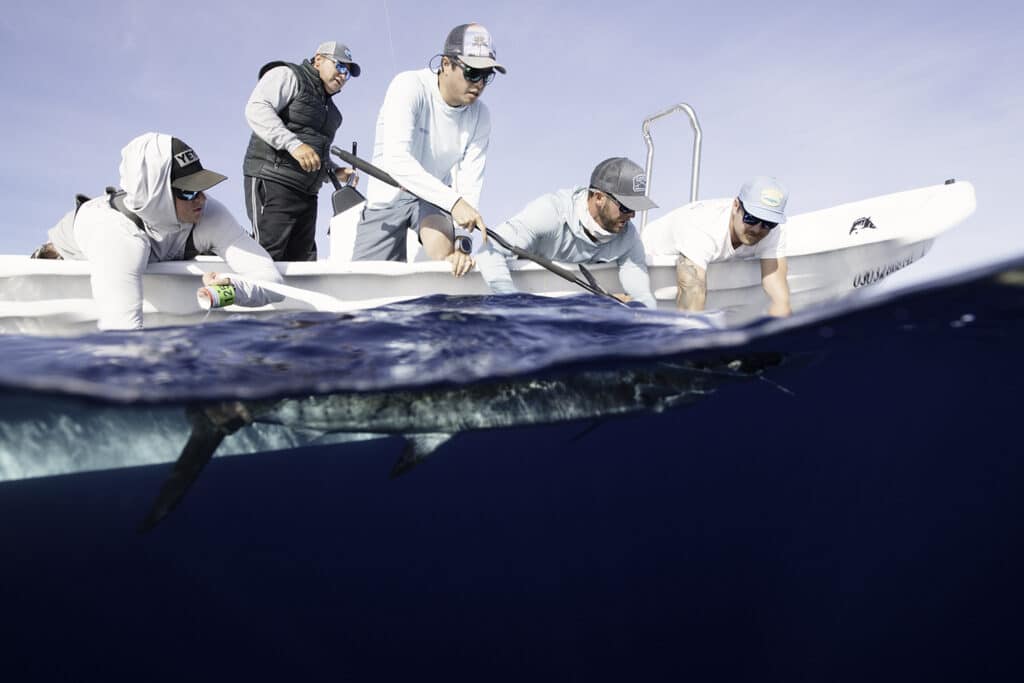
Together, these tagging methods painted a more detailed picture of fisheries, informing conservation efforts and helping to ensure that fisheries management is effective. By embracing these technologies, the American Saltwater Guides Association and other conservation partners are advancing our understanding of fish species that are critical to both ecosystems and the economy.

Photo Credit: Carter Abramson | Trevor Johnson Every now and then, we encounter something so
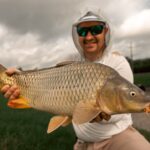
This past weekend, ASGA proudly sponsored the Dirty Carp Tournament in Louisiana — and no, you didn’t misread that.
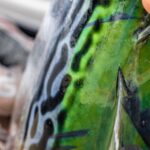
After years of data pouring in from The Albie Project, advocacy, persistence, and support from

This morning, the Connecticut Environment Committee held a hearing on House Bill 6248, a bill
We rely on our members and donations to keep fighting for a sustainable tomorrow in marine conservation.
GIVE THE GIFT OF FISHERIES CONSERVATION THIS HOLIDAY SEASON. SHOP ASGA GOODS THAT FUND FISHERIES RESEARCH & ADVOCACY CAMPAIGNS
JOIN ASGA IN CALLING FOR CRITICAL MANAGEMENT ACTION AFTER YEARS OF SPAWN FAILURES & POOR MANAGEMENT.
By using this website, you agree to our use of cookies. We use cookies to provide you with a great experience and to help our website run effectively. To learn more, please review our privacy policy.